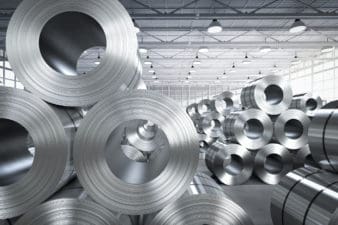It has been a tough year for silver investors, myself among them, with the lustrous white metal’s price taking a beating on the back of a stronger U.S. economy, declining oil prices, and a resurgent U.S. dollar. Over the last year, the price of silver has plunged a whopping 20% compared with gold falling a mere 3% in value.
This has caused the gold-to-silver ratio to widen well beyond historical averages with 75 ounces of silver now needed to buy one ounce of gold. Such a disconnect underscores just how undervalued silver is in comparison to its more valuable peer.
This key catalyst will push silver prices higher
I recently wrote that there are a range of emerging catalysts set to drive silver’s price skyward, but key among them is growing demand for its use in a range of industrial applications. These applications include brazing and alloys, electronic components, light emitting diodes, photovoltaic cells, inks, medical, ethylene oxides, and batteries.
While demand for silver in industrial applications has been muted in recent months because of slowing industrial activity in the Eurozone and China, it can only pick up as the world economy continues to grow. A number of economists are predicting a rebound in global manufacturing and economic activity in 2017 and 2018, which will drive greater demand for silver for use in industrial processes. In a recent report, the Silver Institute forecast that demand for silver for use in industrial processes by 2018 is set to rise by 27% or an additional 142 million ounces when compared to 2013 levels.
On the other side of the equation demand continues to outstrip supply. This occurred in 2013 and the Silver Institute expects it to occur in again for 2014 and 2015. This can be explained by silver miners and recyclers scaling back investment in activities aimed at boosting supply because of the low silver price.
What is the way to invest in silver?
Typically, many investors associate investing in silver with investing either in physical bullion or a silver ETF that tracks the price of silver. But I believe both of these opportunities are inferior to investing in a silver miner or silver streaming company. This is because both offer investors leveraged exposure to the silver price maximising their returns with even a modest appreciation in the silver price driving their share prices ever higher.
However, my preferred choice is silver and other precious metals streamer Silver Wheaton Corp. (TSX: SLW)(NYSE: SLW), because as a precious metals streamer it is a far less risky proposition than the silver miners.
This is because Silver Wheaton does not operate mines. It is essentially lending funds to miners to in exchange for the right to purchase the silver produced at a fixed price, which is well below the market price. Subsequently, this allows it to operate with far lower costs than miners giving it the ability to generate significantly higher margins from even a modest rise in the silver price.
This can be seen for the third quarter 2014 where Silver Wheaton’s cash operating costs were $4.59 per ounce of silver, giving it a cash operating margin of $14.39 an ounce despite significantly lower prices. For the equivalent period Pan American Silver Corp., the world’s largest primary silver miner, had cash costs of $12.29 per ounce, leaving it with a relatively thin margin.
It also significantly mitigates many of the risks associated with investing in miners with it being a high cost and risky industry, requiring significant capital expenditure to develop mining assets with no guarantee they will generate a significant return.
These characteristics make Silver Wheaton a lower risk investment than the silver miners while giving investors the biggest bang for their buck with it offering the same leveraged exposure to silver prices. I believe this makes it an important addition to investors portfolio with silver prices set to rebound over the medium to long-term.





